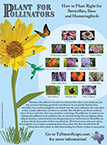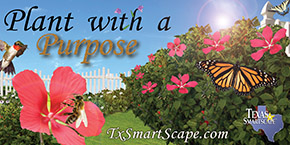For Pollinators

Jump to: Hummingbirds | Butterflies | Bees | Printable Flyers and Media
When designing your garden or landscape, there are many issues to take into consideration such as sunlight and water needs of plants. We encourage low water use plants properly spaced and grouped together by watering needs. You will also want to consider flowering patterns so you can have year-round color (or not, if you're into that look). But if you really want to take your personal paradise to the next step and help out a few beneficial birds and insects, then you will want to think about using plants that attract butterflies, bees, and hummingbirds. We list here several SmartScape plants from our database that are natural food sources for these pollinators and take it a step further to look at year-round food sources.
Planting with pollinators in mind not only provides value to your landscape, but also promotes blooming growth for your flowers! As you provide food for these butterflies, bees and hummingbirds, you benefit from the cross pollination that takes place as they transfer pollen from one flower to another. This will allow your flowers to bloom better.
Hummingbirds
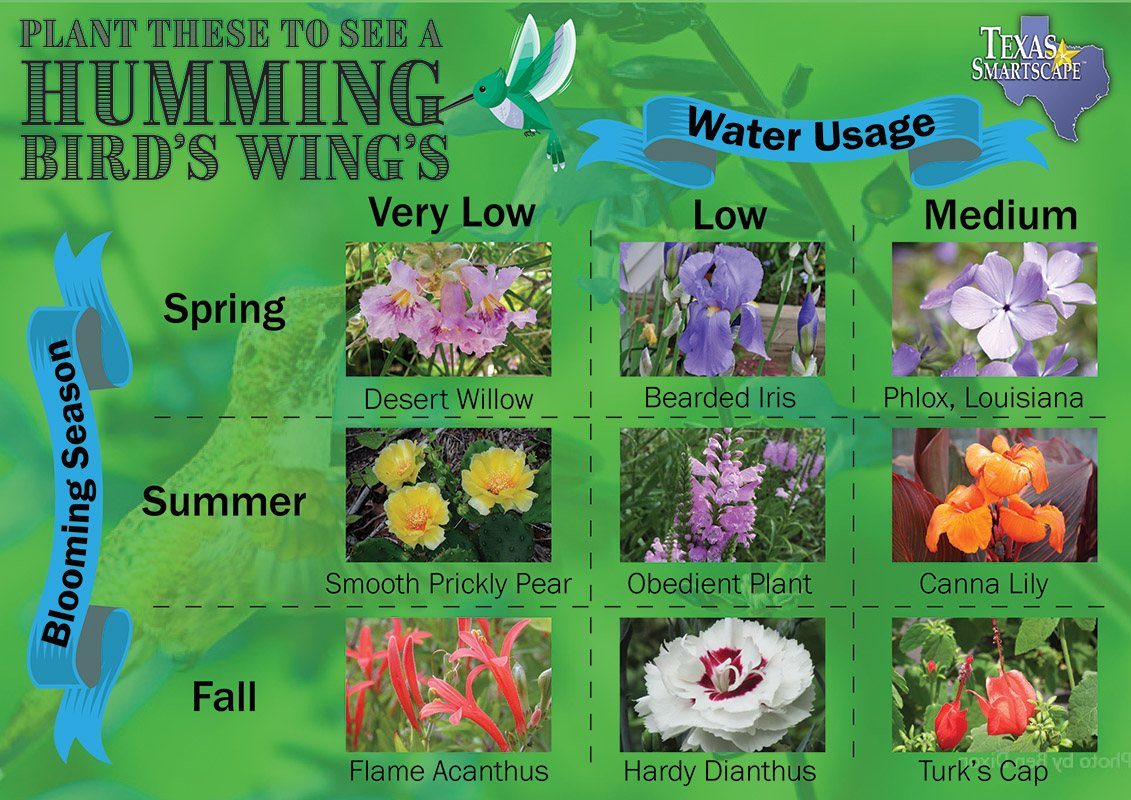
Behind the beauty of this fast-flying bird lies an issue most people are unaware of: hummingbirds are struggling with their migration patterns in the winter due to starvation. Many hummingbirds travel south for winter and often travel through or even stay in Texas for the duration of this season. The majority of flowering blooms at this time of year are often less bountiful. Habitat destruction for these birds in many areas across the United States has also played a big role in the struggles of their journey.
Flowers providing nectar are not the only nutrition source for hummingbirds, insects are also another viable source. However, with the rise of pesticide use over the year, there is a worry that there might not be enough healthy insects for the masses of hummingbirds migrating through North America to feast on. It has been noticed that some hummingbirds are stopping in the Texas region and looking for food.
This places emphasis on planting Texas Native plants that have a long extended blooming season and always keeping hummingbird feeders clean and full. When planting your hummingbird safe heaven, be sure to plant the colorful flowers together. This will allow the hummingbird to see the cluster easily and be more inclined to explore your garden. With hummingbirds having a natural pattern of returning to food sources, you can often spot returning visitors (just be sure to keep the cat indoors)!
Butterflies
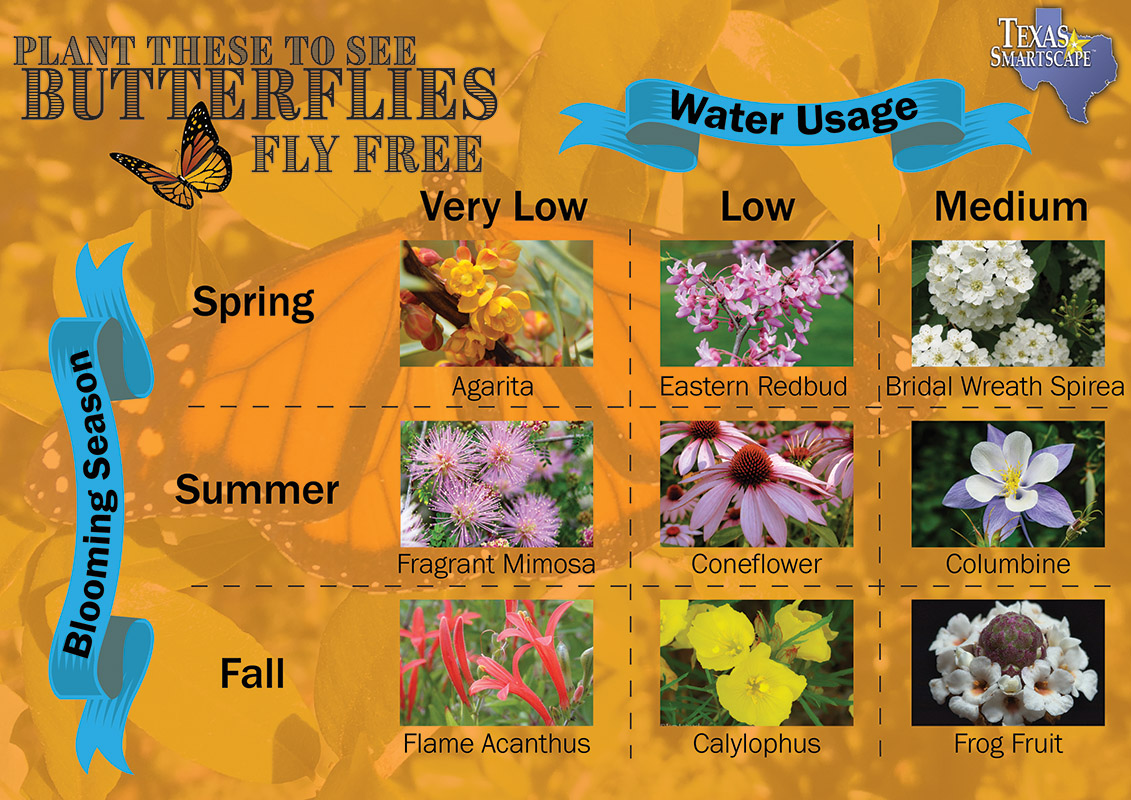
The Texas state butterfly is the Monarch butterfly and is currently under consideration for the endangered species list. In 2014, a petition to place the Monarch on the Endangered Species List was launched in conservation efforts. Over the past twenty years, the overall population overall has dropped by approximately 80%.
The migration path of this butterfly from North America goes through Texas, and finally ends at their destination in the mountains in Mexico. So, it is vital that we plant a variety of food sources for this beautiful creature to access on their journey.
There are numerous problems that face the monarchs is in this phase alone. Changing climate is seen as an issue to these butterflies, as it has caused more large-scale natural disasters, like hurricanes or tornados, to wipe out some of the population in their migration path. The large winter storm in 2016 that brought heavy snowfall in the mountains also wiped out millions of monarchs. Development of infrastructure in green space also plays a role in reducing food sources and habitat space for the species. With deforestation and destruction of their habitat, less butterflies are likely to survive the harsh weather due to lack of shelter. The excessive use of herbicide on plants that butterflies feed from or lay their eggs on contributes to the loss of the species as well. Monarch butterflies will only lay their eggs on milkweed which creates a large need for milkweed to be planted throughout their migration path (including Texas). While milkweed is an important part of the Monarch lifecycle, it is also important to plant a good mix of native Texas flowers that have overlapping blooming seasons as a way to always provide nectar.
Some experts have suggested that the monarch butterfly is the "canary of the mines," the first to show a sign of trouble in the balance in the insect population. It is important to support the monarch, and other butterflies before it is too late. As pollinators they provide a great deal of value to our ecosystem and food.
Bees
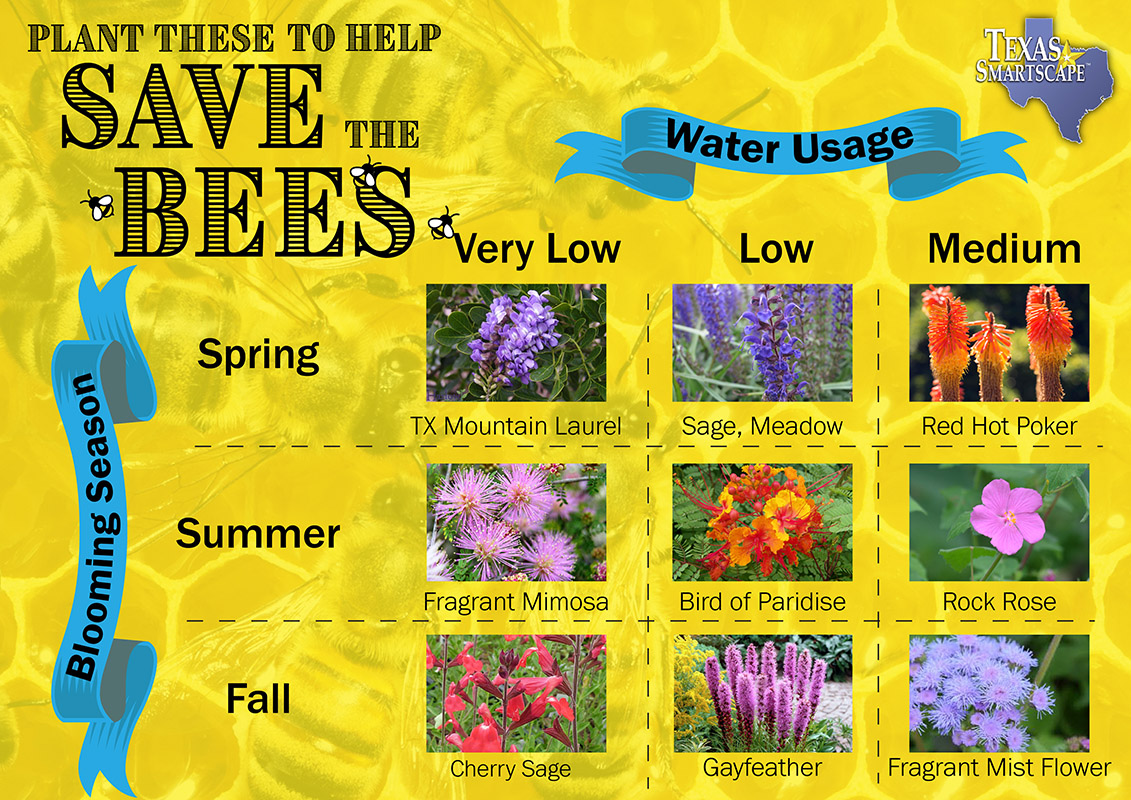
It is no secret of how threatened bees are as a species. Over the last fifty years, and especially in the last twenty years, there has been a rapid decline in bee population. "Colony Collapse Disorder" (or CCD) was a term first used in 2006, when millions of bees disappeared from hives without any indication as to why. This insect is also seen as an indicator species, the first to show when there are signs of trouble in the balance of the ecosystem.
With the rise of using harsh herbicides and pesticides, bee populations have fallen greatly. When crop farmers and neighborhood gardeners alike starting using these products, the insects they targeted grew resistant to the chemicals being used on them. This creates a positive feedback loop in which herbicides and pesticides keep getting stronger. While these chemicals are not targeting bee's necessarily, the bee that attempts to pollinate the plant encounters the chemicals used on it and likely dies.
As the North Texas population grows, habitat loss grows as well. The use of land that has been allocated towards agricultural farming practices has grown as well. With urban development, bee's that are generalists in their food choices have a better chance of survival, as they are not picky and many different types of flowering blooms that are planted in the area can be used for survival. With bees that are specialists and can only feed from certain plants, they often do not survive in the growing urban region. Agricultural land provides another problem, with the pressure to grow high crop yields. Bees are often taken in loads and travel in trucks from farm to farm to pollinate these crops. Bees alone were found to pollinate approximately $587 million worth of crops every year. This practice may be one of the reasons why bees are more likely to fall susceptible to disease and parasites as it has a tendency to stress the bees out and does not provide a healthy variety of food sources.
The direct cause of what causes Colony Collapse Disorder is unknown; however, it could likely be a combination of what has been listed above. There have been many efforts to learn more about why this is happening specifically in Texas. The Texas Beekeepers Association has been highlighting the importance of honeybee research, dedicating $10,000 to map the honeybee genome. This was completed in 2003 at the Human Genome Sequencing Center at the Baylor College of Medicine in Houston. The association also was able to help raise $600,000 for a honeybee lab at the Texas A&M University.
While it may sound impossible to bring back all the bees, every bit of supportive effort counts toward restoring the population. Planting Texas native plants that bloom throughout different times of the year can provide nourishment to the bees when they need it most. Helping spread awareness to others about the state that bees are in can also provide a big impact. Buying local honey supports your nearby honeybee farmers and promotes a need for more of these helpful pollinators.


